“Satanism has been called a religion of the flesh, the mundane, the carnal — and rightly so. They believe in greed, indulgence, and materialism”
For centuries, nations have been told that their governments serve the people, but buried beneath treaties, charters, and banking laws lies a far different truth. The real power that shapes global politics, war, and finance is not found in parliaments or presidencies but in a tightly woven web of corporate and financial control.
From the Act of 1871, which transformed the United States into a corporate entity, to the creation of the Federal Reserve and the rise of the Bank for International Settlements (BIS) the world’s “central bank of central banks” a hidden empire has quietly dictated the fate of nations. This article uncovers the root of their power, how citizens became collateral under a corporate government, and how an unelected financial elite, operating through the BIS, the Vatican, and the Rothschild dynasty, came to control the controllers themselves.
The Dirty Secret about Money
Ask yourself this question: did you know that governments can never run out of money? Don’t stress, not many people do. The truth is we operate under a fiat system where money is no longer backed by gold, so governments can create as much money as they want and direct it according to the economic and social needs of their nation.
This is only possible of course if each individual country removes the ‘private’ central bank that controls the money of their nation, as well as stops selling their debt (bonds) to other private and foreign stakeholders. Simply, each government can take back the power to manage their countries money and remove the central banking system which is run by private families that make their living off governments (the tax system) and other banking institutions.
If you think this all sounds insane, you’re right. Why don’t governments just create the money themselves so they don’t have to rely on a tax system, as well as pay interest to rich families? The answer is that the so-called elite have their tentacles spread right through society, including the big multinational corporations that ‘purchase’ political campaigns and therefore government policy. They’re controlling our money and our minds.
How J.P. Morgan Sunk The Titanic?
J.P. Morgan was one of the main driving forces calling for the creation of the fraudulent Federal Reserve system. But standing in his way were other very powerful businessmen like John Jacob Astor, Benjamin Guggenheim and Isador Strauss who did not want to see the Federal Reserve come to life. Enter the Titanic.
When the Titanic went down on that cold April night in 1912, it had nearly a dozen wealthy businessmen on board, nearly all of whom opposed Morgan’s takeover of the US financial system. But one person it did not have onboard was its owner, J.P. Morgan, who had mysteriously cancelled right before Titanic set sail
The Federal Reserve scheme was birthed at a secret meeting on Jekyll Island, Georgia in 1910, and would force upon the United States the greatest and most diabolical act of treason this country has ever seen. It is not part of the Federal Government, it has no reserves, and is in fact the biggest ponzi scheme in the world. And oh, almost forgot, it’s against the law to audit their books and see what they’re actually up to.

“We shall have a World Government, whether or not we like it. The only question is whether World Government will be achieved by conquest or consent.”
James Paul Warburg, before the US Senate Subcommittee on Revision of the United Nations Charter February 17, 1950.
The seven men met on Jekyll island were Nelson Aldrich and Frank Vanderclip who represented the Rockefeller financial empire. Henry Davidson, Charles Norton and Benjamin Strong represented J.P. Morgan. Paul Warburg represented the Rothschilds Banking dynasty of Europe.
The Federal Reserve is how Wall Street and the US banking cartel controls the finances of America, and it has been that way since its creation in 1913.
Not coincidentally, 1913 was also the year that the Federal Income Tax was started as well. Within two decades, America would be in the grip of the greatest depression in modern times, with a never-ending cycle of inflation and recession that we have endured since then. Furthermore, the Federal Reserve is illegal.
According to Article I, Section 8 of the U.S. Constitution, the U.S. Congress is the one that is supposed to have the authority to “coin Money, regulate the Value thereof, and of foreign Coin, and fix the Standard of Weights and Measures”. So exactly why is the Federal Reserve doing it? The slime trail of evidence takes us all the way back to when a man named J.P. Morgan controlled just about everything and everyone, and he would have his way no matter the cost.
J.P. Morgan had so much money and so much power at the turn of the 20th Century that he loaned the United States government money during a financial crisis to keep it afloat. When I was in school, Morgan and his contemporaries like Andrew Mellon and John D.
Rockefellers were known as the ‘robber barons‘ for the ruthless and scheming ways they used to create their vast wealth and empires. One of the companies that J.P. Morgan owned was called the International Mercantile Marine Company, which in turn purchased the White Star Line that built two vast luxury liners. One was called the Olympic, and the other was called the Titanic.
J.P. Morgan was one of the main driving forces calling for the creation of the fraudulent Federal Reserve system. But standing in his way were other very powerful businessmen like John Jacob Astor, Benjamin Guggenheim and Isador Strauss who did not want to see the Federal Reserve come to life. But J.P. Morgan had a plan, and he had a ship. An ‘unsinkable’ ship.
When the Titanic went down on that cold April night in 1912, it had nearly a dozen wealthy businessmen on board, nearly all of whom opposed Morgan’s takeover of the US financial system. But one person it did not have onboard was its owner, J.P. Morgan, who had mysteriously cancelled right before Titanic set sail. And within less than 2 years, the Federal
The Reserve Act would pass in December of 1913, and America would forever be under the control of Wall Street and the banking system. Now this is where things get really weird.
Many times the New World Order will broadcast their plans well in advance of when they are actually carried out, this is known today as ‘predictive programming‘. We have all seen episodes of the Simpsons where future events like 9/11 were eerily predicted. But did you know that a plan to have a jetliner smash into New York buildings and blame it on another country were first conceived in 1962 in a US government false flag operation called Operation Northwoods? And so it was with the Titanic.
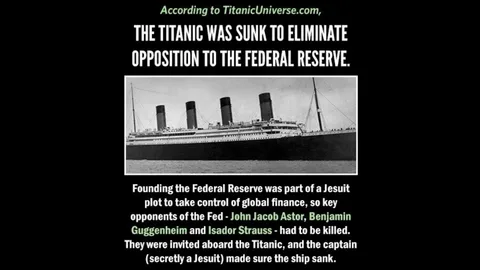
In 1898, 14 years before Titanic was sunk, a man by the name of Morgan Robertson wrote a book called ‘The Wreck Of The Titan‘ about a massive luxury liner that was filled with rich and powerful passengers that sank to the bottom of the ocean.
Here are some super-creepy bullet points about Titan and Titanic:
- In the book, Titan is described as the largest ship of its day (1898). The Titanic was the largest ship in real life in 1912.
- Both the fictional Titan and the actual Titanic were nearly the same size, with the Titanic only about 25 meters longer.
- The fictional Titan is called “unsinkable” in the book and hits an iceberg in mid-April. The Titanic was also considered unsinkable and struck an iceberg in mid-April.
- Both ships were capable of speeds over 20 knots, which was exceptionally fast for their time.
The fictional Titan did not have enough lifeboats for its passengers, and neither did the Titanic, as it carried fewer lifeboats than needed.
Did the New World Order broadcast their plans 14 years before carrying them out? Did J.P. Morgan deliberately sink the Titanic in 1912 to ensure passage of the Federal Reserve Act in 1913? Before you answer that, consider this. During the Recession of 2008-11, President Barack Obama declared that the Wall Street and the banking giants were ‘too big to fail’, and authorized 200 billion dollars in ‘loans’ to be given to them while millions of average Americans were allowed to lose everything.
And who is right near the top of that list? J.P. Morgan Chase, of course. Wall Street and the banks were not allowed to go under because Wall Street and the banks control the Federal Reserve, so what did they do? They simply printed fake money and ‘loaned’ it to themselves, and magically wiped away their losses. But it was only possible because the Titanic sank in 1912, and took with it the people who would have stopped J.P. Morgan from creating the Federal Reserve.
FDR makes US Citizens the Enemy March 6, 1933

The Act of October 6, 1917, The Trading With the Enemy Act. Congress amended the definition of the enemy to include the American people on March 9th, 1933. Thereby making our status as the enemy no different than the Germans during WW1. As you read the Proclamations below, you will see the reference to the Act of October 6, 1917 as amended. Now you know what part of the act was amended.
Proclamation 2039 – Declaring Bank Holiday
March 6, 1933
By the President of the United States of America
A Proclamation
Whereas there have been heavy and unwarranted withdrawals of gold and currency from our banking institutions for the purpose of hoarding; and
Whereas continuous and increasingly extensive speculative activity abroad in foreign exchange has resulted in severe drains on the Nation's stocks of gold; and
Whereas those conditions have created a national emergency; and
Whereas it is in the best interests of all bank depositors that a period of respite be provided with a view to preventing further hoarding of coin, bullion or currency or speculation in foreign exchange and permitting the application of appropriate measures to protect the interests of our people; and
Whereas it is provided in Section 5 (b) of the Act of October 6, 1917 (40 Stat. L. 411), as amended, “That the President may investigate, regulate, or prohibit, under such rules and regulations as he may prescribe, by means of licenses or otherwise, any transactions in foreign exchange and the export, hoarding, melting, or earmarkings of gold or silver coin or bullion or currency . . .”; and
Whereas it is provided in Section 16 of the said Act “That whoever shall willfully violate any of the provisions of this Act or of any license, rule, or regulation issued thereunder, and whoever shall willfully violate, neglect, or refuse to comply with any order of the President issued in compliance with the provisions of this Act, shall, upon conviction, be fined not more than $10,000, or, if a natural person, imprisoned for not more than ten years, or both . . .”;
Now, Therefore I, Franklin D. Roosevelt, President of the United States of America, in view of such national emergency and by virtue of the authority vested in me by said Act and in order to prevent the export, hoarding, or earmarking of gold or silver coin or bullion or currency, do hereby proclaim, order, direct and declare that from Monday, the Sixth day of March, to Thursday, the Ninth day of March, Nineteen Hundred and Thirty-three, both dates inclusive, there shall be maintained and observed by all banking institutions and all branches thereof located in the United States of America, including the territories and insular possessions, a bank holiday, and that during said period all banking transactions shall be suspended. During such holiday, excepting as hereinafter provided, no such banking institution or branch shall pay out, export, earmark, or permit the withdrawal or transfer in any manner or by any device whatsoever, of any gold or silver coin or bullion or currency or take any other action which might facilitate the hoarding thereof; nor shall any such banking institution or branch pay out deposits, make loans or discounts, deal in foreign exchange, transfer credits from the United States to any place abroad, or transact any other banking business whatsoever.
During such holiday, the Secretary of the Treasury, with the approval of the President and under such regulations as he may prescribe, is authorized and empowered (a) to permit any or all of such banking institutions to perform any or all of the usual banking functions, (b) to direct, require or permit the issuance of clearing house certificates or other evidences of claims against assets of banking institutions, and (c) to authorize and direct the creation in such banking institutions of special trust accounts for the receipt of new deposits which shall be subject to withdrawal on demand without any restriction or limitation and shall be kept separately in cash or on deposit in Federal Reserve Banks or invested in obligations of the United States.
As used in this order the term “banking institutions” shall include all Federal Reserve Banks, national banking associations, banks, trust companies, savings banks, building and loan associations, credit unions, or other corporations, partnerships, associations or persons, engaged in the business of receiving deposits, making loans, discounting business paper, or transacting any other form of banking business.
FRANKLIN D. ROOSEVELT
Proclamation 2040 – Bank Holiday
March 9, 1933
By the President of the United States of America
A Proclamation
Whereas, on March 6, 1933, I, Franklin D. Roosevelt, President of the United States of America, by Proclamation declared the existence of a national emergency and proclaimed a bank holiday extending from Monday the 6th day of March to Thursday the 9th day of March, 1933, both dates inclusive, in order to prevent the export, hoarding or earmarking of gold or silver coin, or bullion or currency, or speculation in foreign exchange; and
Whereas, under the Act of March 9, 1933, all Proclamations heretofore or hereafter issued by the President pursuant to the authority conferred by section 5 (b) of the Act of October 6, 1917, as amended, are approved and confirmed; and
Whereas, said national emergency still continues, and it is necessary to take further measures extending beyond March 9, 1933, in order to accomplish such purposes:
Now, therefore, I, Franklin D. Roosevelt, President of the United States of America, in view of such continuing national emergency and by virtue of the authority vested in me by Section 5 (b) of the Act of October 6, 1917 (40 Stat. L. 411), as amended by the Act of March 9, 1933, do hereby proclaim, order, direct and declare that all the terms and provisions of said Proclamation of March 6, 1933, and the regulations and orders issued thereunder are hereby continued in full force and effect until further proclamation by the President.
In Witness Whereof, I have hereunto set my hand and have caused the seal of the United States to be affixed.
Done in the District of Columbia, this 9th day of March, in the Year of our Lord One Thousand Nine Hundred and Thirty three, and of the Independence of the United States the One Hundredth and Fifty-seventh.
FRANKLIN D. ROOSEVELT
By the President:
CORDELL HULL
Secretary of State.
America as a Corporation
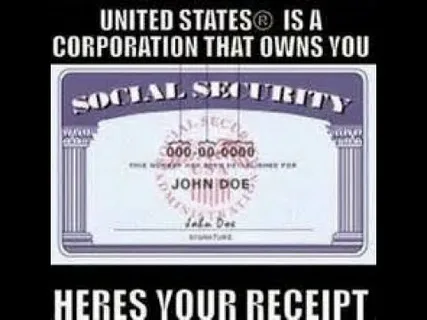
According to Wikipedia, the District of Columbia Organic Act of 1871 was an Act of Congress that repealed the individual charters of the cities of Washington and Georgetown, establishing a new territorial government for the entire District of Columbia. Although Congress repealed this territorial government in 1874, the legislation was the first to create a single municipal government for the federal district.
The Act has become the basis for several claims within the sovereign citizen movement. According to these claims, the Act transformed the District, and, by extension, the entire United States, into a business corporation. This belief arises from the use of the term municipal corporation in the Act.
In reality, there are many types of corporations. A corporation is any group authorized to act as a single legal entity; in this case, the District was simply organized as a municipal corporation, similar to most U.S. cities and counties.
The “Two Constitutions” Theory
Many constitutional historians and independent researchers argue that 1871 marked the year the original U.S. Constitution was abandoned and replaced with a new one. Since then, they claim, the U.S. president and Congress have operated under a different set of rules and policies.
According to this theory, most Americans are unaware that there are supposedly two constitutions in the United States. Researcher Jordan Maxwell described it as The UNITED STATES (corporation) versus the united states of America. The former refers to the corporate government, while the latter refers to the original constitutional republic founded in 1776.
On July 4, 1776, the people of America declared independence from the Crown (the temporal authority of the Roman Catholic Pope), creating a free Republic. For 95 years, the American people were said to be free and independent.
However, this alleged freedom ended in 1871, when the “Constitution for the United States of America” was changed to “THE CONSTITUTION OF THE UNITED STATES OF AMERICA,” written in capital letters. Facing financial distress after the Civil War, Congress made a deal with foreign banking interests, the so-called Crown/Banking Cartel (or City of London Corporation) thereby incurring debt to the Pope.
According to this view, this agreement allowed bankers to regain control over the United States, leading directly to the passage of the Act of 1871.
With no constitutional authority, Congress created a separate form of government for the District of Columbia. The Act of 1871 established a city-state, a state within a state, covering ten square miles in the heart of Washington, D.C. This district had its own flag and its own independent constitution, referred to as the United States’ “second constitution.”
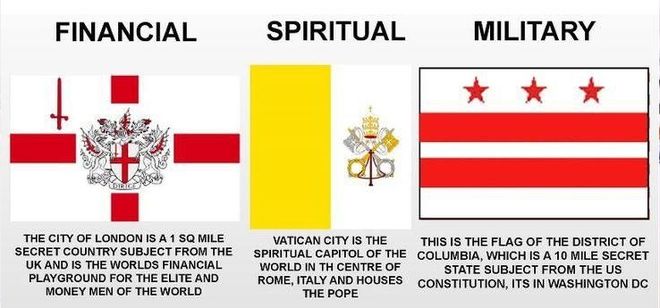
The Three-City Empire
The flag of Washington, D.C. features three red stars, each symbolizing one of three city-states that make up what is referred to as the Empire of the City:
- Washington, D.C. – the military arm,
- The City of London Corporation – the economic and financial center, and
- Vatican City State – the spiritual authority that oversees all.
Although geographically separate, these three entities are said to function as an interlocking empire controlling global politics and finance.
Vatican Law and Corporate Governance
The constitution for the District of Columbia allegedly operates under Vatican law, known as Lex Fori (local law). When Congress passed the Act of 1871, it created a corporation known as THE UNITED STATES, enabling the District of Columbia to operate outside the original U.S. The Constitution and, critics argue, against the best interests of American citizens.
According to Jordan Maxwell, the world operates under two forms of law: the law of the land and the law of the sea (maritime law). The law of the land governs people and nations, while the law of the sea governs commerce, trade, and banking.
Credit cards, for instance, function under international maritime law, usable across nations, much like ships operating between ports.
Birth Certificates and Maritime Law
In this framework, ships are considered female entities that deliver goods, labor, delivery, birth/berth. Similarly, humans are seen as maritime products with a “certificate of manifest,” represented by a birth certificate. In this document, the parent is listed as the “informant,” symbolizing the transfer of property to the Department of Commerce.
Under this idea, every human being becomes “stock” or property of the government the moment they are born.
UNITED STATES vs. united states of America
Proponents of this theory claim that there is a legal distinction between the UNITED STATES (a corporation) and the united states of America (the original republic). The Constitution for the United states of America was formed in 1787, while the Constitution of the UNITED STATES was allegedly created in 1871.
According to Jordan Maxwell, UNITED STATES, INC. was formed as a corporate entity in Delaware in 1871, with its citizens functioning as employees under corporate law. Like any corporation, it has a President, Vice President, Secretary, and Treasurer, reflecting the structure established by the Act of 1871.
The 14th Amendment and the Creation of Federal Citizenship
The 14th Amendment ratified in 1868 established a new type of citizenship distinct from the original state citizenship that existed under the Constitution. It was originally designed to provide legal status and access to federal benefits for freed slaves following the Civil War. This amendment created what is known as federal citizenship which applied to those under the direct jurisdiction of the federal government rather than the individual states.
Under this framework freed slaves and others who accepted federal benefits became wards of the federal government. In legal terms such individuals were considered paupers supported at public expense. According to principles of common law paupers do not possess the full rights of sovereign citizens because they are under guardianship. The Articles of Confederation had previously stated in Article 4 that paupers have the same rights as fugitives.
The 14th Amendment therefore defined a separate class of citizenship for those under federal care and protection. Later the Ku Klux Klan Act of 1871 outlined six specific rights held by these federal wards.
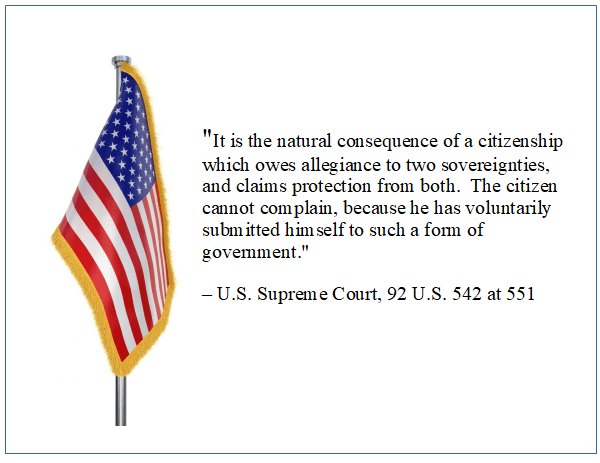
The Difference Between the 5th and 14th Amendments
The distinction between the 5th and 14th Amendments is crucial. In 1878 the U.S. Supreme Court in the case of Davidson v. New Orleans explained that these provisions are not redundant. The 5th Amendment protects the unalienable rights of people in the federal territories stating that no person shall be deprived of life liberty or property without due process of law. The 14th Amendment applies to those under federal jurisdiction guaranteeing a limited set of rights under similar language but within a different legal framework.
Jurisdictions and the Meaning of “United States”
The 13th Amendment which abolished slavery uses the phrase “subject to their jurisdiction” referring to the several states in the union. The 14th Amendment however uses the singular phrase “subject to the jurisdiction” referring to the federal government. This shows that the word “United States” carries two different meanings. The plural form refers to the union of sovereign states while the singular form refers to the federal entity created by those states.
People create county governments which then form state governments through constitutional conventions and ratification. Those states send representatives to the federal government under the authority of the people. When an individual applies for federal benefits he voluntarily moves under federal jurisdiction and relinquishes his standing as a state citizen.
State and Federal Citizenship
Original state citizenship continued to exist after the 14th Amendment. The U.S. Supreme Court confirmed this in the 1873 case of United States v. Susan B. Anthony where it was stated that the rights of state citizens were not affected by the 14th Amendment and remained protected by other provisions of law. This means that there is no automatic birthright citizenship under federal law.
The Role of Martial Law
Following the Civil War the nation remained under martial law rule. The 14th Amendment extended this military authority by using it to establish federal jurisdiction over those who accepted government welfare through the Freedman’s Bureau. Only a small number of freed slaves applied for federal assistance because they understood that accepting it meant forfeiting certain rights. The old maxim of law warned that civil laws reduce an ungrateful freedman to his original slavery.

[“This Is a White Man’s Government,” political cartoon by Thomas Nast, published in Harper’s Weekly, September 5, 1868. Depicted standing atop a black Civil War veteran with a ballot box are a “Five Points Irishman,” Ku Klux Klan founder Nathan Bedford Forrest, and Wall Street financier and Democrat August Belmont.]
Citizenship and Jurisdiction
The distinction between state and federal jurisdiction became clearer through later Supreme Court cases. In Edwards v. California in 1941 the Court noted that birth within a state does not itself establish citizenship of that state. Federal citizenship arises only through connection to the federal government’s jurisdiction.
In Elk v. Wilkins in 1884 the Court ruled that Native American John Elk was not subject to federal law because he did not owe direct political allegiance to the federal government. The Court explained that those who are citizens under the 14th Amendment are those completely subject to the political jurisdiction of the United States and who owe direct allegiance to it.
Voluntary Submission to Federal Authority
The 14th Amendment citizen is one who has voluntarily accepted federal jurisdiction usually by seeking federal benefits or recognition. Such individuals have no standing to complain against the federal government because they have consented to its authority.
Under the original Constitution Vice President Thomas Jefferson explained that citizens were subject to only three federal crimes those specifically listed in the Constitution and no others. Modern federal jurisdiction has expanded far beyond that limit because individuals consent to it often unknowingly through actions such as applying for Social Security Numbers or other federal programs.
The Social Security System and Federal Benefits
The Social Security Act requires that anyone applying for a Social Security Number must be an applicant for or recipient of benefits financed in whole or in part by federal funds. This means that by applying for a Social Security Number an individual identifies as a recipient of federal welfare and therefore becomes subject to federal jurisdiction.
In Edwards v. California the Supreme Court clarified that welfare applies only to those who are destitute of property and resources. Earlier in Busser v. Snyder in 1925 the Pennsylvania Supreme Court described the poor as those helpless and unable to support themselves. Thus federal benefits are reserved for those who have no other means of subsistence and who by accepting aid come under federal control.
Two Classes of Citizens
Throughout American history there have existed two distinct forms of citizenship. The first is state citizenship which predates the federal government and remains sovereign within each state. The second is federal citizenship created by the 14th Amendment which applies to those subject to the jurisdiction of the federal government.
Each individual must understand under which jurisdiction he lives. By accepting federal benefits or privileges one consents to the authority of the limited federal government rather than remaining under the sovereignty of the states. The choice determines one’s rights, legal standing and relationship to the Constitution.
Citizens as Assets
In 1892, the international banksters first announced their plans to wage war against the U.S. population in their Banker’s Manifesto of 1892. However, “We the People” were not officially made “enemies of the state” until 1933, when President Franklin D. Roosevelt, with the help of Congress, decided to seize the people’s gold on behalf of the Federal Reserve, the international banking cartel. Roosevelt needed a “state of emergency” to make it possible.
How the Federal Reserve Banksters Stole Our Gold
By this statute, everyone was required to turn in their gold. Failure to do so would constitute a violation punishable by a fine of not more than $10,000 and imprisonment for not more than ten years. It was, in effect, a seizure. Whose property may be seized without due process of law under the Trading With the Enemy Act? The enemy’s. Whose gold was seized? Ours, the gold of the people of the United States.
Are you seeing the fraud here now? Who did they make the “enemy”? We the People.
The Bilderberg Plan and “Silent Weapons for Quiet Wars”
In 1954, at their first meeting at the Bilderberg Hotel, the global elite agreed to a cooperative agenda for taking control of the U.S. population. The U.S. Military described this program in detail in a technical manual dated May 1979 called Silent Weapons for Quiet Wars. This plan was the result of the joint efforts of Rockefeller, Harvard, and the U.S. Air Force.
“It is patently impossible to discuss social engineering or the automation of a society, i.e., the engineering of social automation systems (silent weapons) on a national or worldwide scale without implying extensive objectives of social control and destruction of human life, i.e., slavery and genocide.
This manual is in itself an analog declaration of intent. Such a writing must be secured from public scrutiny. Otherwise, it might be recognized as a technically formal declaration of domestic war. Whenever any person or group of persons in a position of great power, and without full knowledge and consent of the public, uses such knowledge and methodologies for economic conquest, it must be understood that a state of domestic warfare exists between said person or group and the public.”
“The original purpose of Operations Research was to study the strategic and tactical problems of air and land defense with the objective of effective use of limited military resources against foreign enemies. It was soon recognized by those in positions of power that the same methods might be useful for totally controlling a society.”
“With these three inventions under their direction, those in positions of power strongly suspected that it was possible for them to control the whole world with the push of a button. The Rockefeller Foundation entered early by funding the Harvard Economic Research Project to study the structure of the American economy. One year later, in 1949, the United States Air Force joined in.”
“War is therefore the balancing of the system by killing the true creditors, We the People, the public which we have taught to exchange true value for inflated currency, and falling back on whatever is left of the resources of nature and regeneration of those resources.”
The National Emergencies Act and the “Enemies of the State”
In 1976, Congress decided to “modify” the national state of emergency but continued to classify the American people as the “enemy.”
On September 14, 1976, Congress passed H.R. 3884, the National Emergencies Act (50 USC 1601), Public Law 94-412, to terminate the broad powers previously granted to the President. Exempted from the law were any and all actions taken before the bill became law, or any fines, assessments, or penalties due the government from those actions.
However, what Congress erased with one hand, it rewrote with the other. Section 201(a) granted virtually the same powers to Congress, which must now authorize the President to declare states of national emergency that he could formerly do without their consent.
This sleight of hand was important to Congress because it allows Congress, through a concurrent resolution, to terminate any state of emergency declared by the President. Retained, almost in its entirety, was the infamous Section 5(b), which classified the citizens of the United States as enemies of their government. The Trading With the Enemy Act has now been duly codified and is a permanent part of U.S. Federal Code. The American people have thus been permanently classified as enemies of their federal government.
The 1977 War on the People
In 1977, the war against “We the People” escalated when Congress granted the Department of Defense a chilling authorization:
“The Secretary of Defense may conduct tests and experiments involving the use of chemical and biological warfare agents on civilian populations within the United States.”
Public Law 95-79, Title VIII, Sec. 808, July 30, 1977, 91 Stat. 334.
This can be found in U.S. Statutes-at-Large, Vol. 91, page 334 and Public Law 97-375, title II, Sec. 203(a)(1), Dec. 21, 1982, 96 Stat. 1882.
The Ongoing Assault on the People
Add to this list of assaults: government-created lab viruses, toxic vaccines, depleted uranium ammunition, fluoridated water, aspartame, GMO food, and mercury fillings. The evidence suggests that the war against “We the People” by the de facto federal government is very real and ongoing.
We obviously have a de facto government that has been robbing, enslaving, and murdering the population of this country for a very long time. They made us their enemy during the fraudulent “state of emergency” in 1933 and have used wars and national emergencies (such as 9/11) to maintain that status ever since.
Filmmaker Aaron Russo discussed the planned and endless “War on Terror” as explained to him by Nick Rockefeller before 9/11 as part of this same agenda of control and deception.
The lesson to be learned from this tragic state of affairs is simple: never trust anyone who has stolen all of your gold. Because, unless they are exposed and apprehended, they will do anything to cover their tracks and avoid accountability. Once they gain power, they do not willingly relinquish it. They then become your enemy, in every sense of the word, as the people who live near the Gulf of Mexico are tragically discovering.
The Aldrich Plan
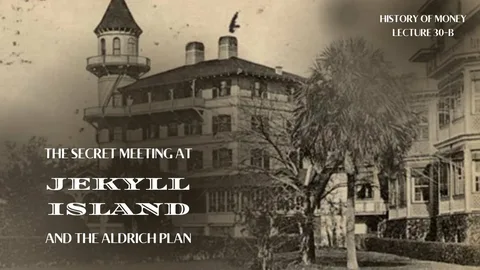
“Finance and the tariff are reserved by Nelson Aldrich as falling within his sole purview and jurisdiction. Mr. Aldrich is endeavoring to devise, through the National Monetary Commission, a banking and currency law. A great many hundred thousand persons are firmly of the opinion that Mr. Aldrich sums up in his personality the greatest and most sinister menace to the popular welfare of the United States. Ernest Newman recently said, ‘What the South visits on the Negro in a political way, Aldrich would mete out to the mudsills of the North, if he could devise a safe and practical way to accomplish it.'” Harper’s Weekly, May 7, 1910.
The Jekyll Island Conference and Propaganda Campaign
The participants in the secret Jekyll Island conference returned to New York to direct a nationwide propaganda campaign in favor of what became known as the “Aldrich Plan.” Three leading universities, Princeton, Harvard, and the University of Chicago, served as the central institutions for this campaign. National banks were compelled to contribute to a fund of five million dollars to persuade the American public that this new central banking plan should be enacted into law by Congress.
Woodrow Wilson, then Governor of New Jersey and former President of Princeton University, was enlisted as a spokesman for the Aldrich Plan. During the Panic of 1907, Wilson had declared, “All this trouble could be averted if we appointed a committee of six or seven public-spirited men like J.P. Morgan to handle the affairs of our country.”
National Citizens’ League
In his 1930 biography of Nelson Aldrich, Stephenson wrote, “A pamphlet was issued January 16, 1911, ‘Suggested Plan for Monetary Legislation,’ by Hon. Nelson Aldrich, based on Jekyll Island conclusions.” Stephenson also noted, “An organization for financial progress has been formed. Mr. Warburg introduced a resolution authorizing the establishment of the Citizens’ League, later the National Citizens League. Professor Laughlin of the University of Chicago was given charge of the League’s propaganda.”
Stephenson characterized the League’s work as “propaganda,” aligning with Professor Seligman’s description of Warburg’s efforts as “the education of the country” meant to “break down prejudices.” Much of the bankers’ five-million-dollar slush fund was spent under the League’s auspices, which was made up largely of university professors. The two most active propagandists were Professor O.M. Sprague of Harvard and J. Laurence Laughlin of the University of Chicago.
Congressman Charles A. Lindbergh, Sr., observed that Professor Laughlin, as Chairman of the Executive Committee of the National Citizens’ League, took a year’s leave from the University of Chicago in 1911 to dedicate himself entirely to the League’s campaign. Lindbergh credited Laughlin’s persistence for the “flattering prospects of a successful outcome.” The University of Chicago, notably, was heavily endowed by John D. Rockefeller, who contributed nearly fifty million dollars.
Stephenson revealed that the Citizens’ League itself was a product of the Jekyll Island conference. The Aldrich Plan was presented to Congress as the result of three years of research and travel by members of the National Monetary Commission, with expenditures exceeding three hundred thousand dollars.
Congressional Opposition and the “Money Trust”
When the Aldrich Plan reached Congress, Congressman Lindbergh testified before the Committee on Rules on December 15, 1911. He declared, “Our financial system is a false one and a huge burden on the people. I have alleged that there is a Money Trust. The Aldrich Plan is a scheme plainly in the interest of the Trust.”
Lindbergh argued that the Aldrich Plan represented “the Wall Street Plan,” and that it was a challenge to the government by the champion of the Money Trust. He accused Aldrich of proposing a system for the trusts while being paid by the government to represent the people. He contended that the Panic of 1907 had been deliberately manipulated to create public support for a “remedy” that would strengthen Wall Street control.
Edward Vreeland’s Defense
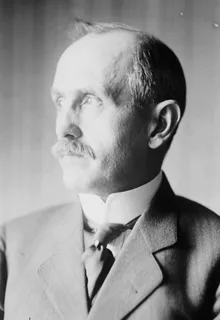
Edward Vreeland, co-author of the Aldrich-Vreeland Emergency Currency Bill, claimed in The Independent on August 25, 1910, that the Aldrich Plan would eliminate monopolies and remove the government from the banking business. Such claims were typical of the propaganda surrounding the Plan, promising an era of economic fairness while masking deeper monopolistic ambitions.
The Nation magazine, in its January 19, 1911 issue, noted that the Aldrich proposal avoided the term “central bank” but endowed the proposed “Federal Reserve Association” with the same powers and responsibilities as a European central bank.
The National Monetary Commission’s True Role
After the National Monetary Commission returned from Europe, it held no official meetings for nearly two years. No minutes were recorded showing authorship of the Aldrich Plan. The Commission’s most tangible result was a library of thirty volumes on European banking systems, including a thousand-page history of Germany’s Reichsbank, whose major stockholders were the Rothschilds and Paul Warburg’s family banking house, M.M. Warburg & Company.
Senator Cummins eventually forced the Commission to report its findings in January 1912, but the group disbanded soon after, having failed to produce any genuine legislative work outside of the Aldrich Plan itself.
Resistance Within the Banking Community
Despite the intense propaganda campaign, opposition persisted among independent and regional bankers. Andrew Frame of the American Bankers Association testified before Congress that the Aldrich Plan had been pushed through without open debate. He revealed that many bankers had not even read the bill before being told it had “unanimous” support.
Frame testified that dissenting voices were excluded from the 1911 ABA meeting in New Orleans and that those who opposed the Plan “were throttled.” By 1912, the Association did not renew its endorsement, fearing open debate and widespread opposition.
Testimony from Prominent Bankers
Chairman Carter Glass later called George Blumenthal, partner in the international banking firm Lazard Frères and brother-in-law of Eugene Meyer Jr., to testify. Blumenthal admitted his firm’s deep involvement in gold imports and exports since 1893, though he denied the relevance of these activities to the banking reforms under discussion.
Leslie Shaw, a banker from Philadelphia, criticized the Aldrich Plan’s structure, arguing that its supposed “decentralization” was an illusion. Local associations, he said, would inevitably fall under the control of a few powerful men, ensuring that true financial power remained concentrated.
Congressional Report and Criticism
To promote the Democratic currency bill that would become the Federal Reserve Act, Carter Glass published a report in 1913 condemning the Aldrich Plan. The report criticized the lack of government control, the dominance of large banks, the inflationary potential, and the monopolistic dangers inherent in the proposal. It declared the Aldrich Plan “a broad challenge to the government by the champion of the Money Trust.”
However, as critics have since pointed out, the Federal Reserve Act ultimately achieved much of what the Aldrich Plan had proposed — the establishment of a central banking system privately owned but publicly backed, with control over the nation’s money and credit.
The Nature of Central Banking
In The Rationale of Central Banking (1981), economist Vera C. Smith explained, “The primary definition of a central bank is a banking system in which a single bank has either a complete or residuary monopoly in the note issue. A central bank is not a natural product of banking development. It is imposed from outside or comes into being as the result of Government favors.”
Such a monopoly, she noted, grants enormous power and directly enables inflationary practices through fractional reserve banking, allowing banks to create many times more money than they hold in reserves.
The Aldrich Plan never came to a vote in Congress. The Republicans lost control of the House in 1910, and later the Senate and the Presidency in 1912. Yet the framework it proposed lived on, forming the foundation of the Federal Reserve Act of 1913—a transformation of Aldrich’s “Wall Street Plan” into a “Federal” institution that would permanently reshape American banking and monetary power.
Fractional Reserve Banking and the Creation of Money
The modern banking system has been described as one of the most remarkable deceptions in human history. According to Sir Josiah Stamp, former president of the Rothschild Bank of England, banks possess the power to create money from nothing. He warned that as long as this power remained in their hands, the world would remain under their control. His statement at the University of Texas in 1927 reflects a deep concern about the foundations of modern banking and its control over society.
The Illusion of Money Creation
Most people are unaware that the money they borrow from banks is not real in the traditional sense. When you take out a loan, the bank does not hand you physical cash it already possesses. Instead, it creates digital money through numbers entered into a computer system. This practice is known as fractional reserve banking.
Fractional reserve banking allows a bank to keep only a small fraction of its deposits as actual cash while lending out many times more in digital form. For instance, if a bank holds ten dollars in physical money, it can create and lend one hundred dollars digitally. The ninety dollars that exist only as entries in a ledger are created out of nothing.
The Burden on Borrowers

While banks can create money from thin air, borrowers are required to repay their loans with real money and interest. If a borrower fails to repay, the bank has the legal right to seize assets to recover a debt that was largely fictional from the beginning. This cycle ensures that citizens are perpetually indebted to banks, enriching them through interest on money that never physically existed.
The Federal Reserve and Constitutional Questions
The central banking system of the United States, known as the Federal Reserve, operates as a privately held institution. It is independent of the federal government, yet it holds the authority to issue the nation’s currency. Many critics argue that this arrangement violates the United States Constitution.
Article 1 Section 8 of the Constitution grants Congress the sole power to coin money and regulate its value. This provision has never been amended, suggesting that the Federal Reserve’s control over currency creation is unconstitutional.
Furthermore, Article 1 Section 10 declares that no state shall make anything but gold and silver coin a tender in payment of debts. Since the Federal Reserve issues paper money backed by no tangible asset, this too appears to stand in conflict with constitutional law.
The Origins of the Federal Reserve
The Federal Reserve was established through the Federal Reserve Act of 1913 signed by President Woodrow Wilson. Its formation can be traced back to a secret meeting held in 1910 on Jekyll Island, Georgia. Participants included Senator Nelson Aldrich Paul Warburg Henry Davison and Frank Vanderlip who together drafted what became known as the Aldrich Plan for banking reform.
The act was passed without ratification by the states. By that time the United States government had already been transformed through the Act of 1871 which created a corporate government for the District of Columbia. This corporate entity later adopted a constitution similar to the original but with key differences including the removal of the thirteenth amendment and a shift in its title from “The Constitution for the United States of America” to “The Constitution of the United States of America.”
This change symbolized a transfer of power from a republic governed by the people to a corporate structure controlled by private and international banking interests. Under this system the government operates under private international law rather than common law.
The Consequences of Banking Power
The concentration of power within the banking system has long been recognized by those who understand its mechanisms. The Rothschild brothers wrote in 1863 that those who comprehend the system would either benefit from it or depend on it, while the majority would bear its burdens unknowingly. This observation remains relevant today as modern economies continue to operate under a financial structure built on debt creation and control by private banking institutions.
Fractional reserve banking therefore represents more than just a financial process. It is a system of control that shapes nations and influences every aspect of economic life.
The United States 1754 to 1863

On April 25 1863 Abraham Lincoln bankrupted a commercial company known as the original United States. Prior to this event Lincoln had already formed a Delaware corporation doing business as The United States of America Inc in order to keep the government functioning after the departure of eleven Southern congressional delegates on March 27 1861. Their withdrawal forcefully adjourned Congress without setting a future date to reconvene.
The newly formed corporation claimed to be the successor to the original United States but there was never any lawful contract or trust binding the original entity to this new corporate structure. Lincoln effectively substituted his corporation as a successor trustee while the remaining members of Congress served as a corporate board of directors.
On April 24 1863 Lincoln issued General Order 100 which placed the Grand Army of the Republic in charge of the nation’s fate. The following day the bankruptcy of the original United States was declared. By the end of the Civil War in 1865 both the North and South were devastated and bankrupt. The Southern states lay in ruins under military occupation while the original constitutional Congress had been dissolved and replaced by a corporate body operating as The United States of America Inc.
During Reconstruction between 1867 and 1868 this corporate Congress divided the South into five military districts and placed them under military rule. Military commanders were authorized to appoint judges to civil tribunals which operated under a form of law known as Special Admiralty. This was a maritime form of law unauthorized by the Constitution. The symbol of this system is the gold fringed flag which designates the courtroom as an admiralty jurisdiction with the judge acting as the captain of the ship.
In 1868 the corporate Congress published a new constitution written as a deceptive replica of the original. The original founding document was titled The Constitution for the United States of America while the new corporate charter was titled The Constitution of the United States of America. With this new charter the corporation no longer required ratification of amendments by the states. This allowed for the proclamation of the Fourteenth Amendment in 1868 without lawful ratification.
The Fourteenth Amendment established a new form of citizenship called a citizen of the United States. This status placed every person under a corporate jurisdiction tied to the debts owed to international bankers. Each individual was treated as a corporate entity against which maritime liens could be placed. This system created a financial claim over every person and all property within the nation.
The United States of America Inc 1868 to 1933
In February 1871 the corporate Congress created another corporation for the District of Columbia. This act known as the Act of 1871 declared Congress to be the successor of all United States corporations and the owner of their property. This included control over all corporations in America as well as the natural born inhabitants and their assets.
Through the Act of 1871 the government of Washington D.C. became a separate corporate entity operating under private law rather than public constitutional authority. The corporate Congress later sought to strengthen its legitimacy by creating a new political union composed of federal territories such as Guam, Puerto Rico and American Samoa. This union known as the United States of America Minor was upheld through Supreme Court decisions known as the Insular Tariff Cases.
By 1912 the debts owed to foreign bankers had reached maturity and European financial powers were prepared to seize complete control of the money supply. Their tool was the creation of the Federal Reserve, a private corporation deceptively labeled as a federal entity. The Federal Reserve Act was signed into law by President Woodrow Wilson in 1913 without ratification by the states. Congressman Charles Lindbergh warned that from that moment forward economic depressions would be scientifically created.
In 1917 Congress acting under the direction of international bankers passed the War Powers Act. This act seized all private property in the United States for potential military use and marked the first time a government claimed authority over every citizen’s possessions under the guise of wartime necessity. After the war this power was never relinquished and repeated states of emergency were declared to maintain control of these assets.
During the 1920s the Federal Reserve inflated the money supply leading to widespread speculation and a booming stock market. In 1929 the Reserve deliberately restricted the money flow triggering the Great Depression. Businesses failed, property values collapsed and the bankers purchased vast amounts of assets at minimal cost.
By 1933 the United States Treasury was drained as it continued paying interest to the Federal Reserve in gold and certificates that were shipped to European banks. Facing insolvency President Franklin Roosevelt declared the bankruptcy of the United States of America Inc on March 6 1933.
The Fourteenth Amendment allowed state governors to pledge the good faith and credit of all citizens to finance the reorganization of the bankrupt government. The national debt created by this system was deemed unquestionable by law ensuring perpetual repayment to the Federal Reserve and its international creditors. The true beneficiaries of this arrangement were the private banking families who had achieved total control over the nation’s money and its people.
The Global Masters – The Bank for International Settlements (BIS)
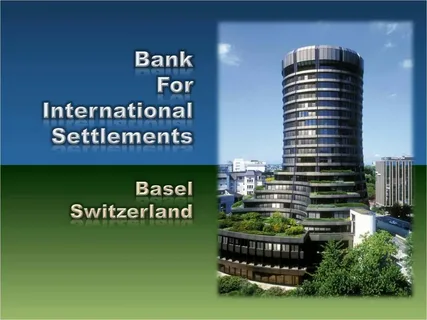
Jerome Powell is Chairman of the US Federal Reserve. Powell was also appointed by the Bank of International Settlements as; Chair of the Global Economy Meeting (GEM) and as Chair of The Economic Consultative Committee (ECC). This means that the Federal Reserve is actually a ‘subsidiary’ of BIS. And ‘They”, not Powell or Yellen, are running our entire Banking System. From raising interest rates, to bank bailouts, to bank monetary investments. We are under the Tutelage Thumb of – BIS.
BIS Determines Global Monetary Policy
BIS determines global monetary policy. All members from India to China to the US and Brazil, BIS regulates its 90 member countries and determines who gets what. At their meeting this past November, BIS determined that some cryptocurrencies needed to be eliminated in order to facilitate better control on their ‘chosen crypto’s. In addition, through Basel III BIS deemed greater regulation and oversight of nonbanking institutions necessary in order to encapsulate risk management schemes. This phase will be completed as of 2028.
In the GEM & ECC meetings, BIS seeks to assure the banking cartel that BIS will continue to leverage the profits these members require in order to be ‘happy’. As such, the Committee states that high interest rates should succeed in that happiness quotient.
Powell’s Role and the Banking Cartel
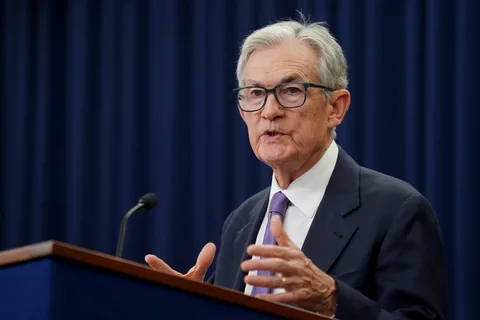
Powell’s US actions are a direct enforcement of BIS. He has repeatedly confirmed that he works for the Banks, not the Public. As such, he created pools of profits wherein the Banking Cartel was advised when to buy, when to sell, what to buy, etc…
Today, this Banking Cartel warns that pension funds and non-banking institutions have over $80 TRILLION in ‘hidden debt’. The debt is NOT on bank balance sheets and it is short term. Relative risk to high interest rates means a scramble. That scramble would mean banks will need to make huge profits via short-term investments to pay interest and debt obligations.
“In mid-2022, non-US banks with direct access to Federal Reserve credit only in their US operations owed an estimated $39 trillion in dollars from FX swaps, forwards and currency swaps.”
FX Swaps and Hidden Assets
FX Swaps are a form of exchange rate currency manipulation. Typically, these trades require a ‘swap dealer’ as defined in the 2010 Dodd Frank Wall Street Reform implemented during the Obama Regime. According to the Reform, a dealer is only regulated should the aggregate swap exceed a minimum of $8billion. The Dodd Frank Reform is said to have disproportionately hit small banks reinforcing greater control within the Banking Cartel.
Due to the regulations, small banks were unable to comply resulting in a 20% drop in their market share. While ‘hidden debt’ is a real factor, what is not discussed is that banks also have ‘hidden assets’ not reported on their Balance Sheets. Typically, these assets can be real estate, resources, and derivatives.
For Example: In 2012, JP Morgan claimed its total assets on its balance sheet were $2.4 trillion. However, it had $1.5 trillion in derivatives NOT reported on its BS. That translates to nearly 40% of assets were Hidden from consumers. When a Bank is bailed out – those ‘hidden assets’ are not taken into account. And taxpayers take a double hit.
Market Manipulation and the BIS
Importers and exporters hedge FX Swaps in Trade. Bond markets typically use FX swaps to increase profit margins. But in essence, these hedges are manipulated and profits are distributed like free chocolate. I imagine, BIS members pay a Fee in order to be aboard the Cartel Train –
According to BIS:
“Off-balance sheet dollar debt may remain out of sight and out of mind, but only until the next time dollar funding liquidity is squeezed. Then, the hidden leverage10 and maturity mismatch in pension funds’ and insurance companies’ portfolios – generally supposed to be long-only – could pose a policy challenge. And policies to restore the flow of dollars would still be set in a fog.”
This ‘challenge’ was called out by BIS when monetary policy across member states was ‘squeezed’ via raising interest rates. The squeezing of the flow of money, aka high interest rates, was purposefully done to create a possible Banking crisis as hidden liabilities and their increased interest payments can no longer be offset by depreciating hidden assets.
This squeeze could create havoc with pension funds and potentially see some funds collapse, insolvent.
While BIS would have us believe all of this trade manipulation is based on markets – the markets are based on BIS. BIS controls the markets, if BIS wants a collapse, it happens. If BIS wants profit – it happens. It is much like The Economist. When they predict something will occur, it is because they are diligently causing its occurrence.
The Rothschild Connection

In order to prove that the House of Rothschild was the hidden hand behind the founding of the Bank of International Settlements [BIS] in Basle, Switzerland – purportedly the central bank for the central banks, pictured above – the following facts need to be sustained with compelling evidence:
The men who founded BIS were working for or with the House of Rothschild when they founded the bank.
The governors of the central banks which became members of the BIS board of directors were working for or with the House of Rothschild in their financial policy-making.
The House of Rothschild has benefited, whether directly or indirectly, from any aspect of the business conducted by BIS.
Founders of the BIS

BIS was founded by four men on 17/05/1930: Hjalmar Schacht [Head of Reichsbank], Charles G Dawes [Chairman of City National Bank], Owen D Young [founder of RCA and chairman of General Electric] and Montague Norman [governor of the Bank of England and partner in JP Morgan].
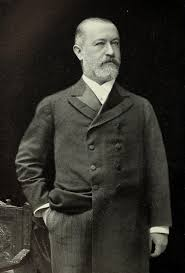
Hjalmar Schacht
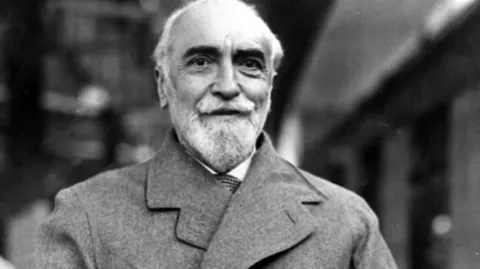
Montague Norman
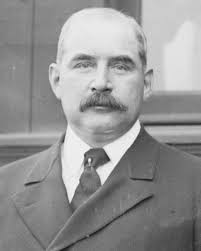
JP Morgan
From the founding of the bank until at least 1939, Schacht worked closely with Jacob Schiff, the Warburgs and Montague Norman, in funneling Wall Street and City of London money into Hitler’s rearmament program; as is documented in Professor Antony Sutton’s painstaking work, Wall Street and the Rise of Hitler:
Funding Hitler’s Regime
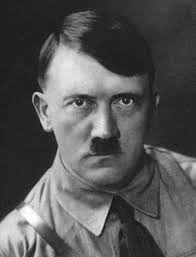
“In October 1931, Warburg received a letter from Hitler which he passed on to Carter at Guaranty Trust Company, and subsequently another bankers’ meeting was called at the Guaranty Trust Company offices. Opinions at this meeting were divided. “Sidney Warburg” reported that Rockefeller, Carter, and McBean were for Hitler, while the other financiers were uncertain.
Montague Norman of the Bank of England and Glean of Royal Dutch Shell argued that the $10 million already spent on Hitler was too much, that Hitler would never act. The meeting finally agreed in principle to assist Hitler further, and Warburg again undertook a courier assignment and went back to Germany.
On this trip Warburg reportedly discussed German affairs with “a Jewish banker” in Hamburg, with an industrial magnate, and other Hitler supporters. One meeting was with banker von Heydt and a “Luetgebrunn.” The latter stated that the Nazi storm troopers were incompletely equipped and the S.S. badly needed machine guns, revolvers, and carbines.”
This evidence shows that the transfers of those funds into the accounts held in trust by BIS for Hitler’s regime were all facilitated by the Warburg's, a family which long ago assimilated itself into the House of Rothschild by marriage and without whom the Rothschild’s hand in world affairs would not have been capable of remaining hidden for so long.
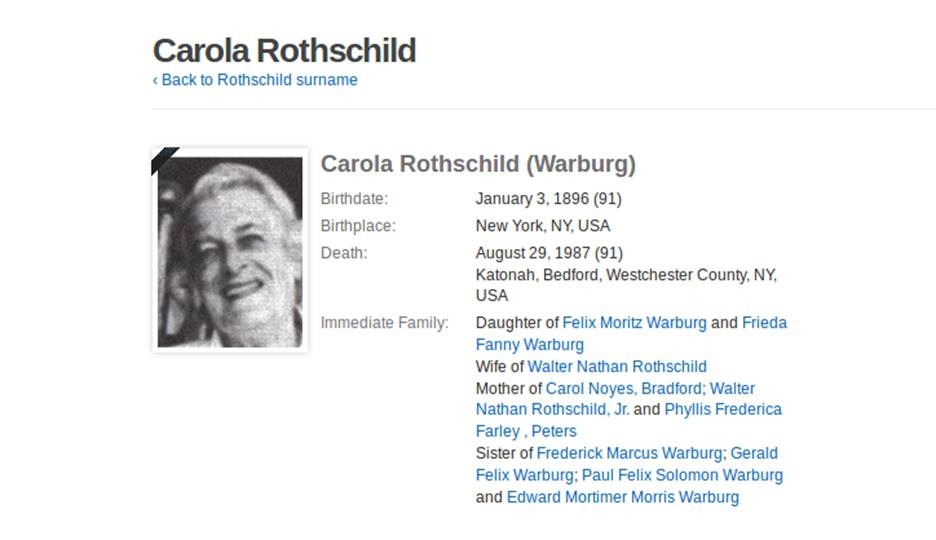
It is therefore fair to deduce from this circumstantial evidence alone that the Warburgs were acting as Rothschild proxies in the financing of Hitler’s rise to power, in which they were aided and abetted by at least two of the four BIS founders, in Schacht and Norman.
Paul Warburg

Paul Warburg was also the driving force behind the creation of the US Federal Reserve, which congressman Charles Lindbergh described as:
“…the most gigantic trust on earth. When the President [Wilson] signs this Bill, the invisible government of the monetary power will be legalized… The greatest crime of the ages is perpetrated by this banking and currency bill.”
Warburg’s reward for bringing into being the U.S. Federal Reserve was to be its first chairman. While speaking before the House Committee on Banking and Currency in 1913, he confessed that, having emigrated to America in 1902, following an extensive education in international banking in Europe, he became a partner of Kuhn, Loeb & Co, which was to become a Rothschild-controlled shareholder of the American central bank.
It is self-evident that the education Warburg received was given by the Rothschilds, just as it was given to Jacob Schiff whilst he lived at their Frankfurt home before emigrating to America.
The Rothschild Empire’s U.S. Agents
Between the American Civil War and the beginning of the First World War, the main U.S. agents of the Rothschild Empire were JP Morgan, Abraham Kuhn and Solomon Loeb.
Newsweek magazine published a brief history of Kuhn, Loeb & Co on February 1st 1936, which stated:
“Abraham Kuhn and Solomon Loeb were general merchandise merchants in Lafayette, Indiana, in 1850. As usual in newly settled regions, most transactions were on credit. They soon found out that they were bankers…
In 1867, they established Kuhn, Loeb and Co., bankers, in New York City, and took in a young German immigrant, Jacob Schiff, as partner. Young Schiff had important financial connections in Europe.
After ten years, Jacob Schiff was head of Kuhn, Loeb and Co., Kuhn having retired. Under Schiff’s guidance, the house brought European capital into contact with American industry.”
Those European “financial connections” were the Rothschilds, in whose Frankfurt house Jacob Schiff was purportedly educated; and their German partners, the M.M. Warburg Company of Hamburg and Amsterdam, who were and remain but an extension of the same all-powerful banking house – Rothschild by another name.
Financing America’s Industrial Giants
During the latter decades of the previous century, the Rothschilds provided John D. Rockefeller with enough finance to develop and dramatically expand his Standard Oil business.
The mechanics of the investment were performed by the Warburgs and Jacob Schiff at Kuhn Loeb, who also financed Edward Harriman’s and Andrew Carnegie’s rail-road and steel empires; whilst JP Morgan’s empire was founded on credit extended by the Rothschild-controlled bank in New York.
It naturally follows that, on the basis that the names of Warburg, Morgan and Schiff are synonymous with that of Rothschild, the banking house is widely considered to have power, control or undue influence over every member of the Federal Reserve board, as well as the selection of its chairman.
The 1976 House Banking Committee Report
In August 1976, the House Banking Committee Staff Report was published, detailing the history of the board members of the Federal Reserve, a portion of which can be seen below:
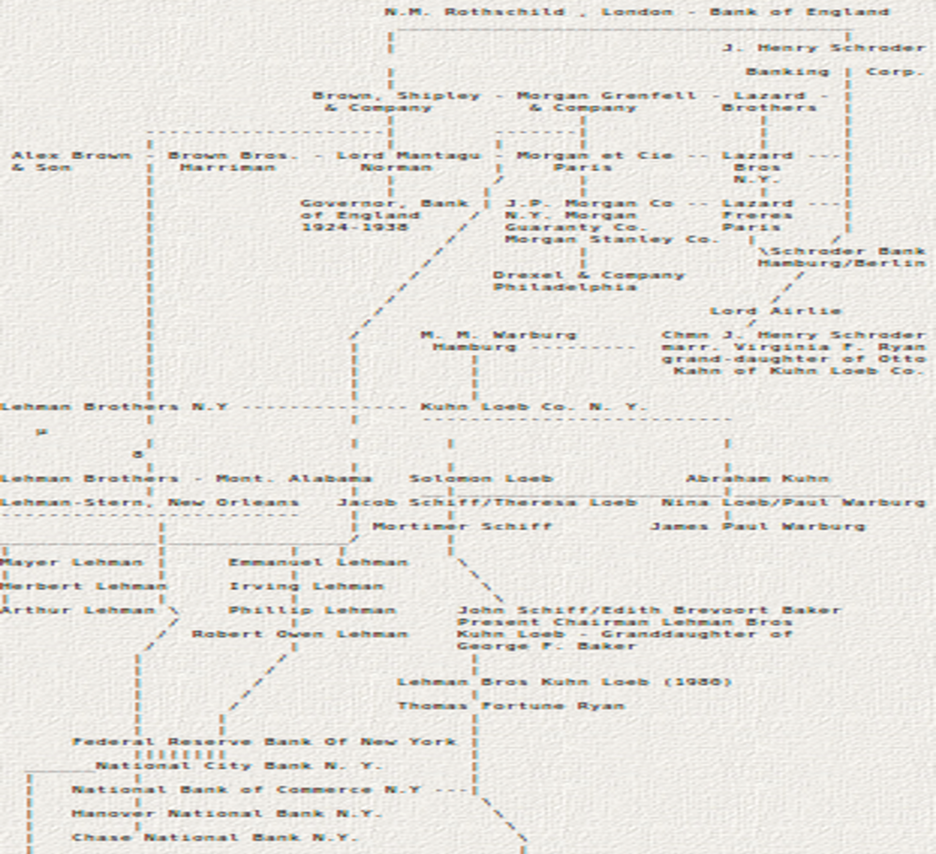
In the event this table is accurate [and there is no reason to believe it is not], there is not one individual or bank or investment company included that could not be considered a Rothschild interest, whether by partnership, investment, lending, commissioning or founding, at the time the Federal Reserve Act was passed into law.
The 1907 Warning from Jacob Schiff
Back in 1907, before the creation of the Federal Reserve, Rothschild-controlled Kuhn Loeb chief, Jacob Schiff, warned the New York Chamber of Commerce that:
“…unless we have a Central Bank with adequate control of credit resources, this country is going to undergo the most severe and far reaching money panic in its history.”
Not long after this speech, the Rothschilds’ agents created a financial panic on Wall Street by making margin calls on the market’s biggest borrowers, just as Nathan Rothschild did by selling government bonds low in the aftermath of the Battle of Waterloo in 1815, both of which resulted in an enormous transfer of wealth to the international bankers during the financial panics that ensued.
Paul Warburg and the Aldrich Plan
Reflecting upon the 1907 panic, Paul Warburg, when speaking to the Banking and Currency Committee, confirmed that he was a driving force behind the Aldrich Plan for the creation of a privately owned US central bank:
“In the Panic of 1907, the first suggestion I made was, ‘let us have a national clearing house’ [Central Bank]. The Aldrich Plan [for a Central Bank] contains many things that are simply fundamental rules of banking. Your aim must be the same.”
The Czech Gold Scandal
In addition to this compelling evidence of the hidden hand of Rothschild influence and control, the Telegraph newspaper published an article on 31/07/2013, detailing the revelations contained in documents released by the Bank of England, concerning the transfer of Czech gold to the Reichsbank BIS account. The article stated:
“The documents reveal a shocking story: just six months before Britain went to war with Nazi Germany, the Bank of England willingly handed over £5.6 million worth of gold to Hitler – and it belonged to another country.
The official history of the bank, written in 1950 but posted online for the first time on Tuesday, reveals how we betrayed Czechoslovakia – not just with the infamous Munich agreement of September 1938, which allowed the Nazis to annex the Sudetenland, but also in London, where Montague Norman, the eccentric but ruthless governor of the Bank of England agreed to surrender gold owned by the National Bank of Czechoslovakia.
The Czechoslovak gold was held in London in a sub-account in the name of the Bank for International Settlements, the Basel-based bank for central banks. When the Nazis marched into Prague in March 1939 they immediately sent armed soldiers to the offices of the National Bank. The Czech directors were ordered, on pain of death, to send two transfer requests.
The first instructed the BIS to transfer 23.1 metric tons of gold from the Czechoslovak BIS account, held at the Bank of England, to the Reichsbank BIS account, also held at Threadneedle Street.
The second order instructed the Bank of England to transfer almost 27 metric tons of gold held in the National Bank of Czechoslovakia’s own name to the BIS’s gold account at the Bank of England.”
Montague Norman and the Gold Transfer
In more simplistic terms, Montague Norman transferred 21 tonnes of Czech gold held by BIS in a Bank of England account, to a Reichsbank account it also held in trust at the English central bank, in order that his friend and fellow central bank head Schacht could finance the final stages of the rearmament of Hitler’s Germany; in addition to transferring 27 tonnes of Czech gold into another BIS account held at the Bank of England, for purposes we can realistically suppose were of a similar criminal nature.
Before any further investigations, it is already clear that Schacht and Norman, the governors of the Reichsbank and the Bank of England respectively, turned a blind eye to a massive theft of wealth from a sovereign nation, to provide arms for the Hitler’s Reich, for whom the drums of war had been beating since 1930. This was done in their unaccountable capacities as trustees of BIS national accounts.
Rothschild Influence over BIS and WWII
Whilst there is a mountain of additional evidence, for the purposes of this essay, it has already been shown that, on the balance of probabilities, two of the four men who founded BIS were working for or with the House of Rothschild, on the ground that all of the money transferred to Schacht’s Reichbank was sent by Rothschild proxy, Jacob Schiff [or his agents] at Kuhn Loeb; whilst the gold transfer from the Bank of England was authorised by Schacht’s fellow BIS founder, Montague, who both must have known that Hitler’s troops had invaded Prague and that the Czech government would never have consented to gifting such a vast amount of gold to Hitler’s Reich and BIS at the time the transfer was sanctioned.
The Rothschild Benefit
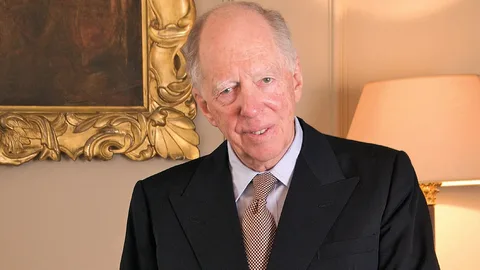
The only question remaining is whether the House of Rothschild has benefited from the operations of BIS, but the answer arises swiftly from a summary of the answers to the other two questions posed.
We have already established that Schacht and Montague co-founded BIS in 1930 and were carrying out Nazi money laundering operations for Rothschild interests, MM Warburg and Kuhn Loeb; and that Paul Warburg was appointed the first chairman of the Federal Reserve in 1914, after the Act he drafted was passed into law; so it is reasonable to assert that the House of Rothschild benefited from these events in the following ways:
- A Rothschild agent was placed in charge of the issue of American credit, at the helm of a new privately owned US central bank, the board of which was entirely made up of the representatives of Rothschild interests.
- This meant that when the heads of the central banks were appointed to the BIS board of directors, Rothschild agents were guaranteed influence over the bank’s operations.
- This sequence of events significantly increased Rothschild influence and power over both the US Government and the European nations who needed BIS to facilitate loans to their central banks in order to wage WWII.
The evidence of which can still be seen today in the form of Donald Trump’s Commerce Secretary, Wilbur Ross, who worked for Rothschild Inc for three decades, as well as Rothschild controlled President Macron of France.
The Creation of Israel and BIS Immunity
The House of Rothschild clearly used their agents, Schacht, Montague, Warburg and Schiff, to fund both sides in WWII in order to provide the circumstances required for the creation of the Zionist state of Israel; which could not have been achieved with such efficiency and secrecy without the participation of BIS, the sovereign bank which grants the protection of immunity from criminal prosecution to any Rothschild agent appointed to the board or to act as its representative, under the terms its Headquarters Agreement with the Swiss Federal Council.
This allows Rothschild operations to be carried out above and beyond any legal jurisdiction or national government scrutiny.
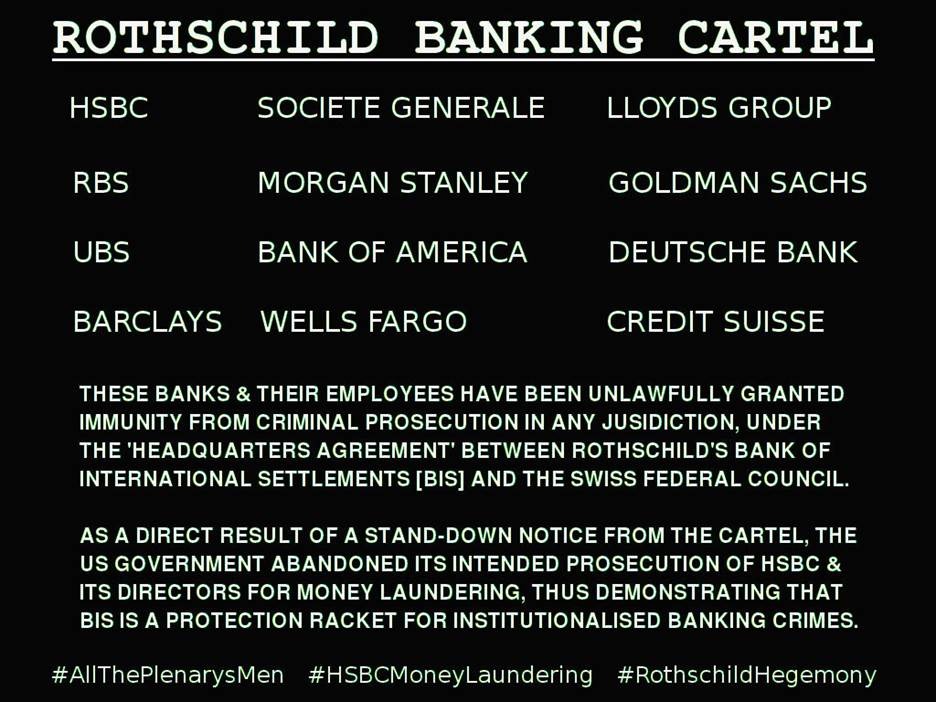
There is a veritable plethora of evidence which would further substantiate the logical assertion that the Rothschilds have benefited, both directly and indirectly, from the operations of the Bank of International Settlements since its creation, but the compelling sources cited in the foregoing passages substantiate that in and of themselves.
The inescapable conclusion is therefore that BIS is and always has been a House of Rothschild interest, despite the fact that the evidence is disguised by the governors of the world’s central banks sitting on the board, every one of which is controlled in much the same way the Rothschilds control the Bank of England and the Federal Reserve. A rigged system in their favour, if ever there was one.
The Bank for International Settlements (BIS)
The Vatican’s, The Monster Octopus has so many tentacles. But of all these sucking arms, nothing is more secretive than the Central Bank of all central banks, the BIS that is nestled in a country with a Red Cross flag to represent it.

The Bank for International Settlements (BIS) headquarters as shown above looks a lot like the Vatican Bank in Rome because it is a Vatican Bank.
Vatican Bank in Rome
It is where the methods creating the most elaborate enslavement scheme are formulated. Done in utmost secrecy, all activities are beyond the reach and understanding even by Swiss law enforcement agencies and government. The elements of secrecy and diplomatic immunity characterize evil intent on the part of its real owners.
The Vatican’s ownership of the bank can be traced through the Rothschild’s $500 trillion dynasty.
For as long as the people keep kneeling on these self appointed gods, they will never be set free.
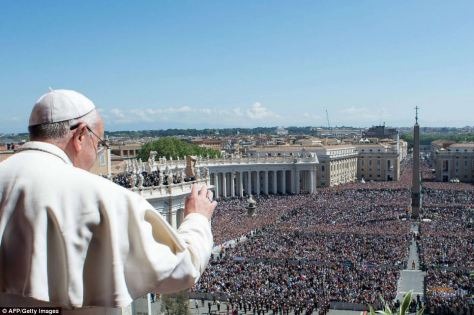
Who Controls the Controllers?
Over the centuries there have been many stories, some based on loose facts, others based on hearsay, conjecture, speculation and outright lies, about groups of people who “control the world.” Some of these are partially accurate, others are wildly hyperbolic, but when it comes to the historic record, nothing comes closer to the stereotypical, secretive group determining the fate of over 7 billion people, than the Bank of International Settlements, which hides in such plain sight, that few have ever paid much attention.
This is their story.
First unofficial meeting of the BIS Board of Directors in Basel, April 1930
The following is an excerpt from TOWER OF BASEL: The Shadowy History of the Secret Bank that Runs the World by Adam LeBor. Reprinted with permission from PublicAffairs.
The World’s Most Exclusive Club
The world’s most exclusive club has eighteen members. They gather every other month on a Sunday evening at 7 p.m. in conference room E in a circular tower block whose tinted windows overlook the central Basel railway station. Their discussion lasts for one hour, perhaps an hour and a half. Some of those present bring a colleague with them, but the aides rarely speak during this most confidential of conclaves.
The meeting closes, the aides leave, and those remaining retire for dinner in the dining room on the eighteenth floor, rightly confident that the food and the wine will be superb. The meal, which continues until 11 p.m. or midnight, is where the real work is done. The protocol and hospitality, honed for more than eight decades, are faultless. Anything said at the dining table, it is understood, is not to be repeated elsewhere.
Few, if any, of those enjoying their haute cuisine and grand cru wines, some of the best Switzerland can offer, would be recognized by passers-by, but they include a good number of the most powerful people in the world. These men, almost all men, are central bankers.
They have come to Basel to attend the Economic Consultative Committee (ECC) of the Bank for International Settlements (BIS), which is the bank for central banks.
The Global Economy Meeting
Its current members [ZH: as of 2013] include Ben Bernanke, the chairman of the US Federal Reserve; Sir Mervyn King, the governor of the Bank of England; Mario Draghi, of the European Central Bank; Zhou Xiaochuan of the Bank of China; and the central bank governors of Germany, France, Italy, Sweden, Canada, India, and Brazil. Jaime Caruana, a former governor of the Bank of Spain, the BIS’s general manager, joins them.
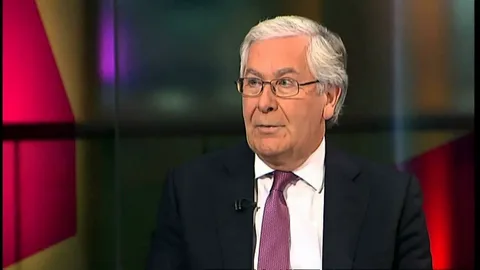
Sir Mervyn King

Mario Draghi
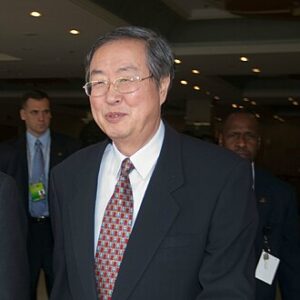
Zhou Xiaochuan
In early 2013, when this book went to press, King, who is due to step down as governor of the Bank of England in June 2013, chaired the ECC.
The ECC, which used to be known as the G-10 governors’ meeting, is the most influential of the BIS’s numerous gatherings, open only to a small, select group of central bankers from advanced economies.
The ECC makes recommendations on the membership and organization of the three BIS committees that deal with the global financial system, payments systems, and international markets. The committee also prepares proposals for the Global Economy Meeting and guides its agenda.
Monday Morning Meetings
That meeting starts at 9:30 a.m. on Monday morning, in room B and lasts for three hours. There King presides over the central bank governors of the thirty countries judged the most important to the global economy.
In addition to those who were present at the Sunday evening dinner, Monday’s meeting will include representatives from, for example, Indonesia, Poland, South Africa, Spain, and Turkey. Governors from fifteen smaller countries, such as Hungary, Israel, and New Zealand are allowed to sit in as observers, but do not usually speak. Governors from the third tier of member banks, such as Macedonia and Slovakia, are not allowed to attend. Instead they must forage for scraps of information at coffee and meal breaks.
The governors of all sixty BIS member banks then enjoy a buffet lunch in the eighteenth-floor dining room. Designed by Herzog & de Meuron, the Swiss architectural firm which built the “Bird’s Nest” Stadium for the Beijing Olympics, the dining room has white walls, a black ceiling and spectacular views over three countries: Switzerland, France, and Germany.
At 2 p.m. the central bankers and their aides return to room B for the governors’ meeting to discuss matters of interest, until the gathering ends at 5.
The Culture and Secrecy of BIS
King takes a very different approach than his predecessor, Jean-Claude Trichet, the former president of the European Central Bank, in chairing the Global Economy Meeting.
Trichet, according to one former central banker, was notably Gallic in his style: a stickler for protocol who called the central bankers to speak in order of importance, starting with the governors of the Federal Reserve, the Bank of England, and the Bundesbank, and then progressing down the hierarchy. King, in contrast, adopts a more thematic and egalitarian approach: throwing open the meetings for discussion and inviting contributions from all present.
The governors’ conclaves have played a crucial role in determining the world’s response to the global financial crisis.
“The BIS has been a very important meeting point for central bankers during the crisis, and the rationale for its existence has expanded,” said King. “We have had to face challenges that we have never seen before. We had to work out what was going on, what instruments we use when interest rates are close to zero, and how we communicate policy. We discuss this at home with our staff, but it is very valuable for the governors themselves to get together and talk among themselves.”
Those discussions, say central bankers, must be confidential. “When you are at the top in the number one post, it can be pretty lonely at times. It is helpful to be able to meet other number ones and say, ‘This is my problem, how do you deal with it?’” King continued.
“Being able to talk informally and openly about our experiences has been immensely valuable. We are not speaking in a public forum. We can say what we really think and believe, and we can ask questions and benefit from others.”
Privilege and Protection
All the governors present at the two-day gathering are assured of total confidentiality, discretion, and the highest levels of security.
The meetings take place on several floors that are usually used only when the governors are in attendance. The governors are provided with a dedicated office and the necessary support and secretarial staff.
The Swiss authorities have no jurisdiction over the BIS premises. Founded by an international treaty, and further protected by the 1987 Headquarters Agreement with the Swiss government, the BIS enjoys similar protections to those granted to the headquarters of the United Nations, the International Monetary Fund (IMF) and diplomatic embassies.
The Swiss authorities need the permission of the BIS management to enter the bank’s buildings, which are described as “inviolable.”
The BIS has the right to communicate in code and to send and receive correspondence in bags covered by the same protection as embassies, meaning they cannot be opened. The BIS is exempt from Swiss taxes.
Its employees do not have to pay income tax on their salaries, which are usually generous, designed to compete with the private sector.
A Bank Beyond Reach
The general manager’s salary in 2011 was 763,930 Swiss francs, while head of departments were paid 587,640 per annum, plus generous allowances.
The bank’s extraordinary legal privileges also extend to its staff and directors. Senior managers enjoy a special status, similar to that of diplomats, while carrying out their duties in Switzerland, which means their bags cannot be searched (unless there is evidence of a blatant criminal act), and their papers are inviolable.
The central bank governors traveling to Basel for the bimonthly meetings enjoy the same status while in Switzerland. All bank officials are immune under Swiss law, for life, for all the acts carried out during the discharge of their duties.
The bank is a popular place to work and not just because of the salaries. Around six hundred staff come from over fifty countries. The atmosphere is multi-national and cosmopolitan, albeit very Swiss, emphasizing the bank’s hierarchy.
Like many of those working for the UN or the IMF, some of the staff of the BIS, especially senior management, are driven by a sense of mission, that they are working for a higher, even celestial purpose and so are immune from normal considerations of accountability and transparency.
The Shield of Secrecy
The BIS’s tradition of secrecy reaches back through the decades. During the 1960s, for example, the bank hosted the London Gold Pool. Eight countries pledged to manipulate the gold market to keep the price at around thirty-five dollars per ounce, in line with the provisions of the Bretton Woods Accord that governed the post–World War II international financial system.
Although the London Gold Pool no longer exists, its successor is the BIS Markets Committee, which meets every other month on the occasion of the governors’ meetings to discuss trends in the financial markets. Officials from twenty-one central banks attend. The committee releases occasional papers, but its agenda and discussions remain secret.
Global Power and Influence
Nowadays the countries represented at the Global Economy Meetings together account for around four-fifths of global gross domestic product (GDP) most of the produced wealth of the world, according to the BIS’s own statistics.
Central bankers now “seem more powerful than politicians,” wrote The Economist newspaper, “holding the destiny of the global economy in their hands.”
How did this happen? The BIS, the world’s most secretive global financial institution, can claim much of the credit. From its first day of existence, the BIS has dedicated itself to furthering the interests of central banks and building the new architecture of transnational finance.
In doing so, it has spawned a new class of close-knit global technocrats whose members glide between highly-paid positions at the BIS, the IMF, and central and commercial banks.
The Legacy of Per Jacobssen
The founder of the technocrats’ cabal was Per Jacobssen, the Swedish economist who served as the BIS’s economic adviser from 1931 to 1956.
The bland title belied his power and reach. Enormously influential, well connected, and highly regarded by his peers, Jacobssen wrote the first BIS annual reports, which were—and remain—essential reading throughout the world’s treasuries.
Jacobssen was an early supporter of European federalism. He argued relentlessly against inflation, excessive government spending, and state intervention in the economy.
Jacobssen left the BIS in 1956 to take over the IMF. His legacy still shapes our world. The consequences of his mix of economic liberalism, price obsession, and dismantling of national sovereignty play out nightly in the European news bulletins on our television screens.
Transparency or Illusion?
The BIS’s defenders deny that the organization is secretive. The bank’s archives are open and researchers may consult most documents that are more than thirty years old. The BIS archivists are indeed cordial, helpful, and professional.
The bank’s website includes all its annual reports, which are downloadable, as well as numerous policy papers produced by the bank’s highly regarded research department. The BIS publishes detailed accounts of the securities and derivatives markets, and international banking statistics.
But these are largely compilations and analyses of information already in the public domain. The details of the bank’s own core activities, including much of its banking operations for its customers, central banks, and international organizations, remain secret.
The Global Economy Meetings and the other crucial financial gatherings that take place at Basel, such as the Markets Committee, remain closed to outsiders.
Private individuals may not hold an account at BIS, unless they work for the bank.
The bank’s opacity, lack of accountability, and ever-increasing influence raises profound questions, not just about monetary policy but transparency, accountability, and how power is exercised in our democracies.
The Obscure Power of the BIS
When I explained to friends and acquaintances that I was writing a book about the Bank for International Settlements, the usual response was a puzzled look, followed by a question: “The bank for what?” My interlocutors were intelligent people, who follow current affairs. Many had some interest in and understanding of the global economy and financial crisis. Yet only a handful had heard of the BIS. This was strange, as the BIS is the most important bank in the world and predates both the IMF and the World Bank. For decades it has stood at the center of a global network of money, power, and covert global influence.
Foundation of BIS
The BIS was founded in 1930. It was ostensibly set up as part of the Young Plan to administer German reparations payments for the First World War. The bank’s key architects were Montagu Norman, who was the governor of the Bank of England, and Hjalmar Schacht, the president of the Reichsbank who described the BIS as “my” bank. The BIS’s founding members were the central banks of Britain, France, Germany, Italy, Belgium, and a consortium of Japanese banks. Shares were also offered to the Federal Reserve, but the United States, suspicious of anything that might infringe on its national sovereignty, refused its allocation. Instead a consortium of commercial banks took up the shares: J. P. Morgan, the First National Bank of New York, and the First National Bank of Chicago.
The real purpose of the BIS was detailed in its statutes: to “promote the cooperation of central banks and to provide additional facilities for international financial operations.” It was the culmination of the central bankers’ decades-old dream, to have their own bank, powerful, independent, and free from interfering politicians and nosy reporters. Most felicitous of all, the BIS was self-financing and would be in perpetuity. Its clients were its own founders and shareholders, the central banks. During the 1930s, the BIS was the central meeting place for a cabal of central bankers, dominated by Norman and Schacht. This group helped rebuild Germany. The New York Times described Schacht, widely acknowledged as the genius behind the resurgent German economy, as “The Iron-Willed Pilot of Nazi Finance.” During the war, the BIS became a de-facto arm of the Reichsbank, accepting looted Nazi gold and carrying out foreign exchange deals for Nazi Germany.
Neutrality Amidst Conflict
The bank’s alliance with Berlin was known in Washington, DC, and London. But the need for the BIS to keep functioning, to keep the new channels of transnational finance open, was about the only thing all sides agreed on. Basel was the perfect location, as it is perched on the northern edge of Switzerland and sits almost on the French and German borders. A few miles away, Nazi and Allied soldiers were fighting and dying. None of that mattered at the BIS. Board meetings were suspended, but relations between the BIS staff of the belligerent nations remained cordial, professional, and productive. Nationalities were irrelevant. The overriding loyalty was to international finance. The president, Thomas McKittrick, was an American. Roger Auboin, the general manager, was French. Paul Hechler, the assistant general manager, was a member of the Nazi party and signed his correspondence “Heil Hitler.” Rafaelle Pilotti, the secretary general, was Italian. Per Jacobssen, the bank’s influential economic adviser, was Swedish. His and Pilotti’s deputies were British.
After 1945, five BIS directors, including Hjalmar Schacht, were charged with war crimes. Germany lost the war but won the economic peace, in large part thanks to the BIS. The international stage, contacts, banking networks, and legitimacy the BIS provided, first to the Reichsbank and then to its successor banks, has helped ensure the continuity of immensely powerful financial and economic interests from the Nazi era to the present day.
Headquarters and Operations
For the first forty-seven years of its existence, from 1930 to 1977, the BIS was based in a former hotel, near the Basel central railway station. The bank’s entrance was tucked away by a chocolate shop, and only a small notice confirmed that the narrow doorway opened into the BIS. The bank’s managers believed that those who needed to know where the BIS was would find it, and the rest of the world certainly did not need to know. The inside of the building changed little over the decades, recalled Charles Coombs. The BIS provided the spartan accommodations of a former Victorian-style hotel whose single and double bedrooms had been transformed into offices simply by removing the beds and installing desks.
The bank moved into its current headquarters, at 2, Centralbahnplatz, in 1977. It did not go far and now overlooks the Basel central station. Nowadays the BIS’s main mission, in its own words, is threefold: to serve central banks in their pursuit of monetary and financial stability, to foster international cooperation in these areas, and to act as a bank for central banks. The BIS also hosts much of the practical and technical infrastructure that the global network of central banks and their commercial counterparts need to function smoothly. It has two linked trading rooms at the Basel headquarters and Hong Kong regional office. The BIS buys and sells gold and foreign exchange for its clients. It provides asset management and arranges short-term credit to central banks when needed.
Unique Role of BIS in Global Finance
The BIS is a unique institution: an international organization, an extremely profitable bank, and a research institute founded and protected by international treaties. The BIS is accountable to its customers and shareholders, the central banks, but also guides their operations. The main tasks of a central bank, the BIS argues, are to control the flow of credit and the volume of currency in circulation, which will ensure a stable business climate, and to keep exchange rates within manageable bands to ensure the value of a currency and so smooth international trade and capital movements. This is crucial, especially in a globalized economy, where markets react in microseconds and perceptions of economic stability and value are almost as important as reality itself.
The BIS also helps to supervise commercial banks, although it has no legal powers over them. The Basel Committee on Banking Supervision, based at the BIS, regulates commercial banks’ capital and liquidity requirements. It requires banks to have a minimum capital of eight percent of risk-weighted assets when lending, meaning that if a bank has risk-weighted assets of $100 million it must maintain at least $8 million capital. The committee has no powers of enforcement, but it does have enormous moral authority. In theory, sensible housekeeping and mutual cooperation, overseen by the BIS, will keep the global financial system functioning smoothly. In theory.
Crisis and Continuity
The reality is that we have moved beyond recession into a deep structural crisis, one fueled by the banks’ greed and rapacity, which threatens all of our financial security. Just as in the 1930s, parts of Europe face economic collapse.
The Bundesbank and the European Central Bank, two of the most powerful members of the BIS, have driven the mania for austerity that has already forced one European country, Greece, to the edge, aided by the venality and corruption of the country’s ruling class.
Others may soon follow. The old order is creaking, its political and financial institutions corroding from within. From Oslo to Athens, the far right is resurgent, fed in part by soaring poverty and unemployment. Anger and cynicism are corroding citizens’ faith in democracy and the rule of law. Once again, the value of property and assets is vaporizing before their owners’ eyes.
The European currency is threatened with breakdown, while those with money seek safe haven in Swiss francs or gold. The young, the talented, and the mobile are again fleeing their home countries for new lives abroad. The powerful forces of international capital that brought the BIS into being, and which granted the bank its power and influence, are again triumphant.
European Integration and BIS Influence
The BIS sits at the apex of an international financial system that is falling apart at the seams, but its officials argue that it does not have the power to act as an international financial regulator. Yet the BIS cannot escape its responsibility for the Euro-zone crisis. From the first agreements in the late 1940s on multilateral payments to the establishment of the European Central Bank in 1998, the BIS has been at the heart of the European integration project, providing technical expertise and the financial mechanisms for currency harmonization.
During the 1950s, it managed the European Payments Union, which internationalized the continent’s payment system. The BIS hosted the Governors’ Committee of European Economic Community central bankers, set up in 1964, which coordinated trans-European monetary policy.
During the 1970s, the BIS ran the “Snake,” the mechanism by which European currencies were held in exchange rate bands. During the 1980s the BIS hosted the Delors Committee, whose report in 1988 laid out the path to European Monetary Union and the adoption of a single currency.
The BIS midwifed the European Monetary Institute, the precursor of the European Central Bank. The EMI’s president was Alexandre Lamfalussy, one of the world’s most influential economists, known as the “Father of the euro.” Before joining the EMI in 1994, Lamfalussy had worked at the BIS for seventeen years, first as economic adviser, then as the bank’s general manager.
Adaptability and Global Governance
For a staid, secretive organization, the BIS has proved surprisingly nimble. It survived the first global depression, the end of reparations payments and the gold standard, the rise of Nazism, the Second World War, the Bretton Woods Accord, the Cold War, the financial crises of the 1980s and 1990s, the birth of the IMF and World Bank, and the end of Communism. Malcolm Knight, manager from 2003 to 2008, noted that by remaining small, flexible, and free from political interference, the bank has succeeded remarkably well in adapting itself to evolving circumstances.
The bank has made itself a central pillar of the global financial system. As well as the Global Economy Meetings, the BIS hosts four of the most important international committees dealing with global banking: the Basel Committee on Banking Supervision, the Committee on the Global Financial System, the Committee on Payment and Settlement Systems, and the Irving Fisher Committee, which deals with central banking statistics.
The bank also hosts three independent organizations: two groups dealing with insurance and the Financial Stability Board. The FSB, which coordinates national financial authorities and regulatory policies, is already being spoken of as the fourth pillar of the global financial system, after the BIS, the IMF, and the commercial banks.
Membership and Global Reach
The BIS is now the world’s thirtieth-largest holder of gold reserves, with 119 metric tons, more than Qatar, Brazil, or Canada. Membership of the BIS remains a privilege rather than a right. The board of directors is responsible for admitting central banks judged to make a substantial contribution to international monetary cooperation and to the bank’s activities. China, India, Russia, and Saudi Arabia joined only in 1996.
The bank has opened offices in Mexico City and Hong Kong but remains very Eurocentric. Estonia, Latvia, Lithuania, Macedonia, Slovenia, and Slovakia have been admitted, while Pakistan has not. Nor has Kazakhstan, a powerhouse of Central Asia.
In Africa only Algeria and South Africa are members. Nigeria, which has the continent’s second-largest economy, has not been admitted. The BIS’s defenders say that it demands high governance standards from new members and when the national banks of countries such as Nigeria and Pakistan reach those standards, they will be considered for membership.
Secrecy and Public Awareness
Considering the BIS’s pivotal role in the transnational economy, its low profile is remarkable. Back in 1930, a New York Times reporter noted that the culture of secrecy at the BIS was so strong that he was not permitted to look inside the boardroom, even after the directors had left. Little has changed. Journalists are not allowed inside the headquarters while the Global Economy Meeting is underway. BIS officials speak rarely on the record, and reluctantly, to members of the press.
The strategy seems to work. The Occupy Wall Street movement, the anti-globalizers, and social network protesters have ignored the BIS. Centralbahnplatz 2, Basel, is quiet and tranquil. There were no demonstrators gathered outside the BIS’s headquarters, no protestors camped out in the nearby park, no lively reception committees for the world’s central bankers.
Power Behind the Scenes
As the world’s economy lurches from crisis to crisis, financial institutions are scrutinized as never before. Legions of reporters, bloggers, and investigative journalists scour the banks’ every move. Yet somehow, apart from brief mentions on the financial pages, the BIS has largely managed to avoid critical scrutiny. Until now.
How The Rothschilds Control And Dictate To The World
Central banks are illegally created PRIVATE banks that are owned by the Rothschild banking family. The family has been around for more than 230 years and has slithered its way into each country on this planet, threatened every world leader and their governments and cabinets with physical and economic death and destruction, and then placed their own people in these central banks to control and manage each country’s pocketbook. Worse, the Rothschilds also control the machinations of each government at the macro level, not concerning themselves with the daily vicissitudes of our individual personal lives. Except when we get too far out of line.
Global Mononation
The grand plan of The First Sphere of Influence is to create a global mononation. Please do not confuse this with the term globalization. Mononation and globalization couldn’t be more different in concept, scope, and purpose. Mononation is one state. It has one government. One set of laws for all ordinary citizens, no laws for the elite. Globalization refers to communicating, trading, interacting, etc. among separate, different, independent, sovereign countries.
The grand plan of The First Sphere of Influence is to create a global mononation.
The Federal Reserve and U.S. Debt
Our own Federal Reserve is an illegally emplaced private bank that is directly responsible for creating all the US’s depressions, recessions, and the inflation and deflation of our dollar. The Fed controls the printing of our own currency, and then charges the US government interest on those loans. The interest is growing each year, making it difficult if not impossible for our government to pay it. How do we pay this interest? By the US Personal Income Tax. This tax goes to the Rothschild family.
Gathering Intelligence
In the coming months, as I continue to gather intel and write a book about The First Sphere of Influence, I will share more and more. For now, I kindly ask that you read each of the 165 lines below. One hundred and sixty-five reasons to believe my intel. You can click on each bank and visit its website. I’ve seen each one. They’re real. And they’re one of the reasons why each country is in such deep debt to this insidious family, the Rothschilds.
By the way, if you’re curious what the US debt is to the BIS, please refer to the table at the end of this article, taken from the latest statistical results provided by the Joint External Debt Hub, which receives data from the BIS, International Monetary Fund, World Bank, and the Organization for Economic Cooperation and Development.
BIS Offices
Representative Office for Asia and the Pacific
78th floor, Two International Finance Centre
8 Finance Street, Central
Hong Kong
Special Administrative Region of the People’s Republic of China
Telephone: (+852) 2878 7100
Fax: (+852) 2878 7123
Representative Office for the Americas
Torre Chapultepec
Rubén Darío 281 – 17th floor
Col. Bosque de Chapultepec
Del. Miguel Hidalgo
11580 México, D.F.
México
Telephone: (+52) 55 91380290
Fax: (+52) 55 91380299
The Rothschild-Owned Central Banks of the World
Afghanistan: Bank of Afghanistan
Albania: Bank of Albania
Algeria: Bank of Algeria
Argentina: Central Bank of Argentina
Armenia: Central Bank of Armenia
Aruba: Central Bank of Aruba
Australia: Reserve Bank of Australia
Austria: Austrian National Bank
Azerbaijan: Central Bank of Azerbaijan Republic
Bahamas: Central Bank of The Bahamas
Bahrain: Central Bank of Bahrain
Bangladesh: Bangladesh Bank
Barbados: Central Bank of Barbados
Belarus: National Bank of the Republic of Belarus
Belgium: National Bank of Belgium
Belize: Central Bank of Belize
Benin: Central Bank of West African States (BCEAO)
Bermuda: Bermuda Monetary Authority
Bhutan: Royal Monetary Authority of Bhutan
Bolivia: Central Bank of Bolivia
Bosnia: Central Bank of Bosnia and Herzegovina
Botswana: Bank of Botswana
Brazil: Central Bank of Brazil
Bulgaria: Bulgarian National Bank
Burkina Faso: Central Bank of West African States (BCEAO)
Burundi: Bank of the Republic of Burundi
Cambodia: National Bank of Cambodia
Cameroon: Bank of Central African States
Canada: Bank of Canada – Banque du Canada
Cayman Islands: Cayman Islands Monetary Authority
Central African Republic: Bank of Central African States
Chad: Bank of Central African States
Chile: Central Bank of Chile
China: The People’s Bank of China
Colombia: Bank of the Republic
Comoros: Central Bank of Comoros
Congo: Bank of Central African States
Costa Rica: Central Bank of Costa Rica
Côte d’Ivoire: Central Bank of West African States (BCEAO)
Croatia: Croatian National Bank
Cuba: Central Bank of Cuba
Cyprus: Central Bank of Cyprus
Czech Republic: Czech National Bank
Denmark: National Bank of Denmark
Dominican Republic: Central Bank of the Dominican Republic
East Caribbean area: Eastern Caribbean Central Bank
Ecuador: Central Bank of Ecuador
Egypt: Central Bank of Egypt
El Salvador: Central Reserve Bank of El Salvador
Equatorial Guinea: Bank of Central African States
Estonia: Bank of Estonia
Ethiopia: National Bank of Ethiopia
European Union: European Central Bank
Fiji: Reserve Bank of Fiji
Finland: Bank of Finland
France: Bank of France
Gabon: Bank of Central African States
The Gambia: Central Bank of The Gambia
Georgia: National Bank of Georgia
Germany: Deutsche Bundesbank
Ghana: Bank of Ghana
Greece: Bank of Greece
Guatemala: Bank of Guatemala
Guinea Bissau: Central Bank of West African States (BCEAO)
Guyana: Bank of Guyana
Haiti: Central Bank of Haiti
Honduras: Central Bank of Honduras
Hong Kong: Hong Kong Monetary Authority
Hungary: Magyar Nemzeti Bank
Iceland: Central Bank of Iceland
India: Reserve Bank of India
Indonesia: Bank Indonesia
Iran: The Central Bank of the Islamic Republic of Iran
Iraq: Central Bank of Iraq
Ireland: Central Bank and Financial Services Authority of Ireland
Israel: Bank of Israel
Italy: Bank of Italy
Jamaica: Bank of Jamaica
Japan: Bank of Japan
Jordan: Central Bank of Jordan
Kazakhstan: National Bank of Kazakhstan
Kenya: Central Bank of Kenya
Korea: Bank of Korea
Kuwait: Central Bank of Kuwait
Kyrgyzstan: National Bank of the Kyrgyz Republic
Latvia: Bank of Latvia
Lebanon: Central Bank of Lebanon
Lesotho: Central Bank of Lesotho
Libya: Central Bank of Libya
Lithuania: Bank of Lithuania
Luxembourg: Central Bank of Luxembourg
Macao: Monetary Authority of Macao
Macedonia: National Bank of the Republic of Macedonia
Madagascar: Central Bank of Madagascar
Malawi: Reserve Bank of Malawi
Malaysia: Central Bank of Malaysia
Mali: Central Bank of West African States (BCEAO)
Malta: Central Bank of Malta
Mauritius: Bank of Mauritius
Mexico: Bank of Mexico
Moldova: National Bank of Moldova
Mongolia: Bank of Mongolia
Montenegro: Central Bank of Montenegro
Morocco: Bank of Morocco
Mozambique: Bank of Mozambique
Namibia: Bank of Namibia
Nepal: Central Bank of Nepal
Netherlands: Netherlands Bank
Netherlands Antilles: Bank of the Netherlands Antilles
New Zealand: Reserve Bank of New Zealand
Nicaragua: Central Bank of Nicaragua
Niger: Central Bank of West African States (BCEAO)
Nigeria: Central Bank of Nigeria
Norway: Central Bank of Norway
Oman: Central Bank of Oman
Pakistan: State Bank of Pakistan
Papua New Guinea: Bank of Papua New Guinea
Paraguay: Central Bank of Paraguay
Peru: Central Reserve Bank of Peru
Philippines: Bangko Sentral ng Pilipinas
Poland: National Bank of Poland
Portugal: Bank of Portugal
Qatar: Qatar Central Bank
Romania: National Bank of Romania
Russia: Central Bank of Russia
Rwanda: National Bank of Rwanda
San Marino: Central Bank of the Republic of San Marino
Samoa: Central Bank of Samoa
Saudi Arabia: Saudi Arabian Monetary Agency
Senegal: Central Bank of West African States (BCEAO)
Serbia: National Bank of Serbia
Seychelles: Central Bank of Seychelles
Sierra Leone: Bank of Sierra Leone
Singapore: Monetary Authority of Singapore
Slovakia: National Bank of Slovakia
Slovenia: Bank of Slovenia
Solomon Islands: Central Bank of Solomon Islands
South Africa: South African Reserve Bank
Spain: Bank of Spain
Sri Lanka: Central Bank of Sri Lanka
Sudan: Bank of Sudan
Surinam: Central Bank of Suriname
Swaziland: The Central Bank of Swaziland
Sweden: Sveriges Riksbank
Switzerland: Swiss National Bank
Tajikistan: National Bank of Tajikistan
Tanzania: Bank of Tanzania
Thailand: Bank of Thailand
Togo: Central Bank of West African States (BCEAO)
Tonga: National Reserve Bank of Tonga
Trinidad and Tobago: Central Bank of Trinidad and Tobago
Tunisia: Central Bank of Tunisia
Turkey: Central Bank of the Republic of Turkey
Uganda: Bank of Uganda
Ukraine: National Bank of Ukraine
United Arab Emirates: Central Bank of United Arab Emirates
United Kingdom: Bank of England
United States: The Dirty Nasty Stinky Fed, Federal Reserve Bank of New York
Uruguay: Central Bank of Uruguay
Vanuatu: Reserve Bank of Vanuatu
Venezuela: Central Bank of Venezuela
Vietnam: The State Bank of Vietnam
Yemen: Central Bank of Yemen
Zambia: Bank of Zambia
Zimbabwe: Reserve Bank of Zimbabwe
One of the significant sources of funds for the Cabal is the healthcare industry which registered a whopping $3.09 trillion in 2014, and is projected to soar to $3.57 trillion in 2017, in the US alone. We believe that this is just a conservative figure.
Conclusion
From the Act of 1871, which quietly redefined the United States as a corporate entity, to the rise of the Bank for International Settlements, which now dictates global financial policy from behind closed doors, a single thread connects the past to the present, the systematic transfer of power from the people to unelected financial elites.
What began as a restructuring of government after the Civil War evolved into a vast global web of monetary dominance, where nations became subsidiaries and citizens turned into collateral. The Vatican, the City of London, and the BIS form the unholy trinity of this empire, governing through debt, law, and deception. Yet, in understanding the origins and mechanisms of this hidden system, people reclaim the first tool of freedom: awareness.
The story of how the world was corporatized is not only history, it is a living reality that continues to shape economies, politics, and human destiny. Only by unveiling it can we begin to imagine a future no longer bound by the silent chains of financial control.
Reference Section
https://archives.gov/milestone-documents/articles-of-confederation
https://bis.org/about/headquart-en.pdf
https://courses.lumenlearning.com/boundless-ushistory/chapter/the-second-industrial-revolution/
https://foundationfortruthinlaw.org/Files/United-States-is-a-corporation.pdf
https://forbes.com/profile/wilbur-ross-jr/
http://atlantictransportline.us/content/immc.htm
https://helenaglass.net/2022/12/06/federal-reserve-run-by-bis/
https://humanity.stacybey.com/index.php?pid=38
https://maryferrell.org/pages/Operation_Northwoods.html
https://newsfromtheperimeter.com/home/tag/Act+of+1871
https://notfooledbygovernment.com/are-you-subject-to-federal-laws/
https://nowtheendbegins.com/how-hollywood-predictive-programming-broadcasts-coming-events/
http://newsfeed.time.com/2012/04/14/author-predicts-titanic-sinking-14-years-earlier/
http://voltairenet.org/IMG/pdf/Sutton_Wall_Street_and_Hitler.pdf
https://usconstitution.net/xconst_A1Sec8.html
http://zerohedge.com/news/2015-04-11/meet-secretive-group-runs-world
https://courses.lumenlearning.com/boundless-ushistory/chapter/the-second-industrial-revolution/
https://www.maryferrell.org/pages/Operation_Northwoods.html
http://newsfeed.time.com/2012/04/14/author-predicts-titanic-sinking-14-years-earlier/